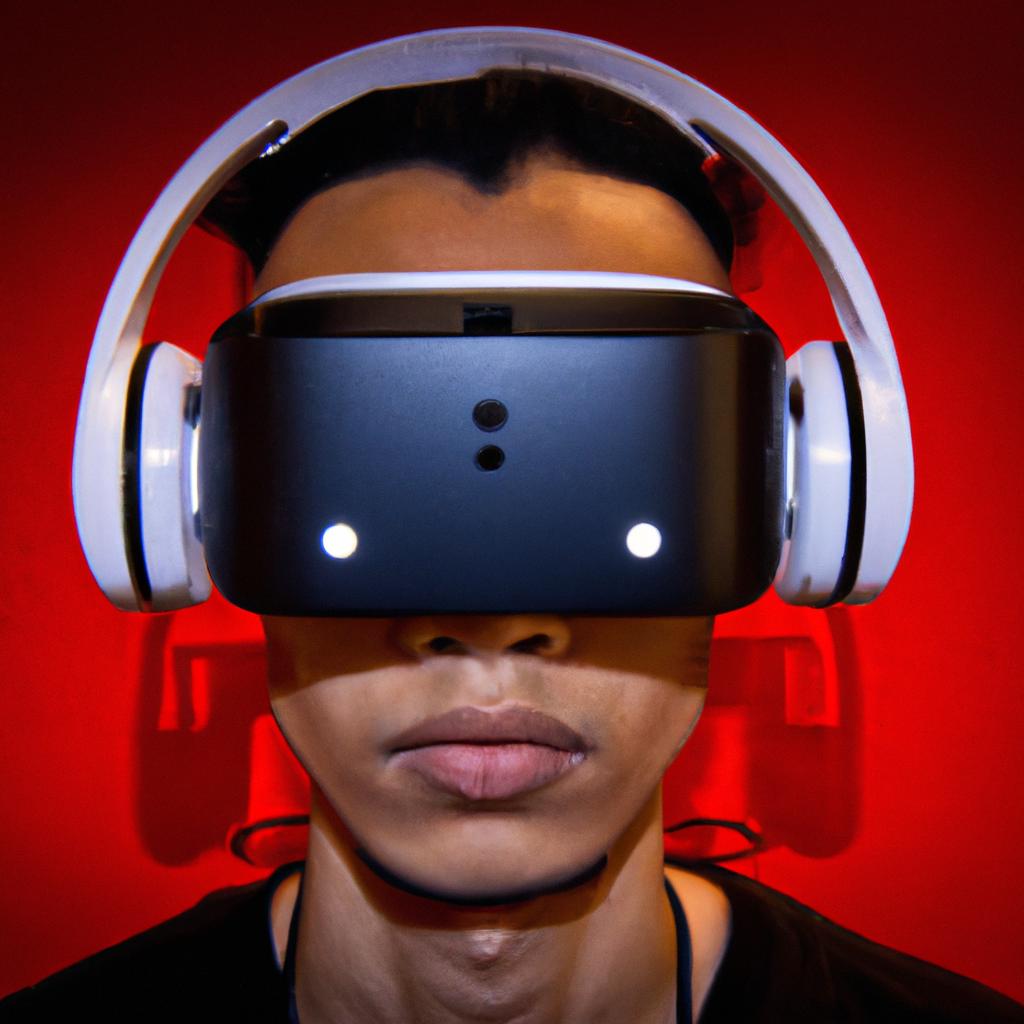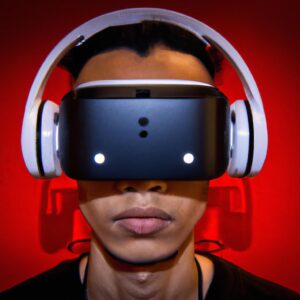Virtual Reality vs Augmented Reality
Virtual Reality (VR) and Augmented Reality (AR) are emerging technologies that can bring a user into entirely new virtual worlds or overlay objects and information onto the real world. In this guide, we’ll explore the history, current trends, and potential of these two concepts.
What is Virtual Reality?
Virtual Reality (VR) immerses users in a computer-generated world. VR headsets like the Oculus, HTC Vive, and Samsung Gear, provide an immersive experience by using multiple sensors to track a user’s head and hand movements inside a virtual space. In this 3D environment, users can interact with objects, play games, and use applications.
What is Augmented Reality?
Augmented Reality (AR) overlays digital images onto the physical world. It requires no headset, but instead uses the camera lens on your smartphone or tablet to detect your surroundings and add digital content, such as 3D objects, sound effects, and visual cues. AR has recently seen a surge in popularity with the rise of apps like Pokemon Go and Snapchat.
Difference between the two
The main distinction between the two is the level of immersion they provide to users. Virtual Reality creates a completely simulated environment, while Augmented Reality remains anchored in the real world. With AR, you can still interact with the physical world and see objects in it, just with added digital elements.
- Virtual Reality: Completely immersive, 3D environment created with specialized hardware
- Augmented Reality: Real-world view with objects augmented with digital elements viewed through a smartphone camera
History of Virtual Reality and Augmented Reality
Virtual Reality (VR) and Augmented Reality (AR) have both been rapidly evolving over the past few decades. VR has its origin in the 1960s when Morton Heilig created ‘The Sensorama’, a device that simulated sensory experiences such as sound, movement, and smell. Since then, many advancements have been made in VR technology, leading to a wide range of applications today.
AR technology was designed and popularised by Ivan Sutherland in 1968 when he developed an AR headset. This invention was called ‘The Sword of Damocles’. AR technology gained wider public attention in the 1990s with the release of the heads-up display technology used by fighter pilots. Followed by the increasing power and declining cost of computing, AR is becoming more accessible to potential users.
Since then, there has been an abundance of new technologies, innovations, and discoveries related to VR and AR. Technologies such as motion tracking, gesture recognition, voice recognition, and computer vision have been developed to enhance the immersive effect of both VR and AR. As a result, their applications have become more diverse.
Current VR/AR Market
In the present day, Virtual Reality (VR) and Augmented Reality (AR) have become essential technologies used in a variety of different fields. Although these two share commonalities, they differ in many ways when looking at their applications and how they are used.
VR is typically used for immersive experiences that create a simulated environment. This technology is often used for gaming, creating interactive simulations, and providing training in these simulated environments. AR, on the other hand, augments the real world environment by adding digital elements to it. This is commonly used to provide tutorials that guide customers to assemble items, as well as providing information to the user in certain scenarios like navigation or shopping.
The applications of these two technologies have seen significant growth over the last few years with new hardware and software being developed every day. Companies are beginning to utilize the strengths of each technology to create unique experiences for their customers and consumers.
Benefits of VR and AR Technologies
The advances in Virtual Reality (VR) and Augmented Reality (AR) technologies have allowed businesses to gain an incredible competitive edge and revolutionize the way consumers and customers interact with products and services. There are many great potential benefits that come from the use of these technologies, both for businesses and customers.
For businesses, using these technologies can result in increased customer satisfaction and loyalty, improved processes and efficiency, greater accuracy, and improved collaboration amongst teams. With VR and AR technologies, companies can share 3D models with customers during product design and development, allowing customers to gain a better understanding of the product. Companies can also respond faster to customer requests regarding product features. Furthermore, by leveraging VR and AR technologies, businesses can further improve their workflow by enabling remote collaboration and virtual training of employees.
From a customer standpoint, these technologies offer a much more immersive experience when purchasing products. Customers can now take a virtual tour of a product they are interested in before making a purchase. Furthermore, customers can get a realistic representation of how a product would look in their home prior to buying. This is especially helpful when buying furniture. Lastly, customers can further customize the products they buy in order to make them even more personalized.
In the end, VR and AR technologies can provide tremendous benefits for businesses and customers alike. Companies and customers alike can benefit from improved collaborations, increased efficiency, greater accuracy, and more personalized experiences.
Challenges of Working with VR and AR Technology
As with any new technology, there are some challenges to consider when working with VR and AR. While the possibilities of this emerging tech are endless, it’s important to understand the risks and obstacles associated with the development and implementation of these technologies.
Some of the most common challenges associated with working with VR and AR include:
- Lack of Standards: Without standardized technology guidelines, it can be difficult to effectively develop and use VR/AR applications.
- High Development Costs: Creating immersive experiences with VR and AR requires a significant investment in both hardware and software.
- Hardware Limitations: VR and AR headsets require powerful hardware, including specialized displays, audio, and sensors, in order to work properly.
- Data Security: Taking into account user safety is of utmost importance when it comes to dealing with confidential personal data.
Although these challenges can’t be ignored, there are solutions to address them. Companies can look into incorporating standards and guidelines such as ISO/IEC 29167 for data security. Developers should also explore ways to make VR and AR more accessible and affordable by creating open source hardware and software. Lastly, developers can work towards creating better user interfaces that are optimized for VR and AR to ensure that the experience is seamless and enjoyable.
Designing User Interfaces for VR/AR
User Interface (UI) design is the process of creating user-friendly interfaces for users to interact with in a virtual or augmented reality environment. UI design involves understanding how users experience and interact with the virtual and augmented world. This means it is important to create an interface that works intuitively for users and allows them to interact with any virtual or augmented object they may come across.
UI design also emphasizes graphical design elements, such as colors, shapes, icons, and images. All these components are used to convey messages and information in an aesthetically pleasing and straightforward manner. The primary goal of UI design is to make using the virtual and augmented environment easier, more intuitive, and enjoyable for the user.
When creating a user interface for virtual and augmented reality technology, there are several best practices to keep in mind. First, the user interface should be designed with a focus on user experience. It should be designed in a way that is easy to understand and navigate, even for users who have never experienced VR or AR before. Additionally, when designing the user interface, it is important to consider the device the user is using, so that the UI can be optimized for that device.
It is also important to be aware of the environment the user is in when creating a UI for VR or AR technology. Consider the lighting, sound, and other factors that can impact the user’s experience. For instance, if the lighting is too dark or bright, it can be difficult to see the UI elements properly. Similarly, if there is too much noise, it can be distracting and difficult to understand directions.
Having an intuitive UI is also key when designing for virtual and augmented reality. The UI should minimize the number of steps needed to complete tasks within the environment, and it should be unobtrusive while still providing the user with all of the information they need. Additionally, it should be designed to accommodate changes that might happen over time, such as new features or objects being added.
Finally, consider the look and feel of the UI. When the user first enters the virtual or augmented environment, the first thing they will likely notice is the UI. It should be visually pleasing and help to make the user feel more comfortable and familiar with the environment. This can be accomplished through the use of colors, shapes, icons, images, and other visuals.
Use Cases of VR/AR Technologies
Companies from all over the world are experimenting with Virtual Reality (VR) and Augmented Reality (AR) technologies, and many are already reaping the rewards. Let’s have a look at some of the most successful use cases.
- A fashion brand used AR tech to let shoppers virtually try on clothes before they buy them in-store.
- A major gaming company is creating an immersive virtual world that allows gamers to interact using VR.
- A technology firm developed an app that uses AR to create virtual instructions for mechanical product assembly.
- Doctors are utilizing VR to train medical professionals without having to use real patients.
- A software company implemented a VR system that assists shoppers in choosing the best home decor items.
These are just some of the ways companies are utilizing VR and AR technologies to improve customer experiences and enhance product offerings. Moving forward, more innovative uses of these technologies will likely be discovered.
Social and Creative Implications of Virtual Reality/Augmented Reality
The emergence of virtual reality (VR) and augmented reality (AR) technologies has revolutionized how people interact with their environment. These immersive technologies are providing new opportunities to explore creative ideas, open social interactions, and develop educational applications. With VR and AR, there is now a new level of physical and digital immersion that provides meaningful experiences and connections between people.
VR and AR technologies have the potential to create powerful social changes. They can help create new ways to engage with communities, break down language barriers, and provide a greater sense of empathy between people. VR and AR technologies can also help in the delivery of education and healthcare to remote locations. Furthermore, with the ability to customize and personalize environments, VR and AR have helped foster creativity and discovery.
AR and VR technologies have the potential to re-shape how people communicate, learn, and view the world. They have already revolutionized the way people interact with their environment, and have been adopted widely by businesses. With the right resources and support, the possibilities of what we can create with these technologies are truly limitless.
Trends in Virtual Reality and Augmented Reality
Virtual reality (VR) and Augmented Reality (AR) are constantly evolving and new trends are rapidly appearing. Companies are investing heavily in the development of new hardware and software to make these technologies available to a larger audience. As a result, we can now see new applications that leverage both VR and AR in science, research, healthcare, education, and more.
Some of the latest trends in VR and AR are:
- The rise of intuitive headgear: Manufacturers are now developing virtual reality headsets that are lighter and simpler to use. The main objective is to make the user experience more comfortable and to eliminate distractions.
- More realistic visuals: New augmented reality software can render virtual images more accurately in 3D. This allows developers to design photorealistic objects and scenes with greater detail.
- Increased portability: Wearable technology is becoming increasingly popular. It provides users with the ability to explore virtual worlds and access augmented reality content on the go.
- Greater interactivity: Developers are creating more interactive experiences that leverage voice control and voice recognition for gaming and other applications.
- Higher levels of immersion: Companies are exploring ways to create even more immersive experiences where users can explore virtual worlds with all five senses.
As you can see, technology is advancing rapidly in the VR/AR space and it is creating many new opportunities for companies, customers, and consumers. Companies and developers need to stay up-to-date with the latest trends in order to ensure they are leveraging the technology effectively.
Virtual reality (VR) and augmented reality (AR) are two of the most popular technologies in use today. The remarkable advances in VR and AR have been made possible through the development of innovative hardware, software, and creative user experiences. VR is an immersive technology that places users inside a simulated 3D environment. AR is a technology that overlays virtual objects onto the existing physical world.
Both VR and AR technologies offer a wide range of benefits to companies, customers, and consumers, such as increased engagement, improved customer service, more efficient operations, and better product designs. However, there are also some challenges that come along with their use, such as the need for user interface design, data privacy, and user acceptance.
Creating a successful user experience requires a well-designed user interface with intuitive navigation and immersive features. When choosing a use case for VR/AR, consider factors such as cost, data security, scalability, and desired outcomes. Additionally, virtual reality and augmented reality can have tremendous social and creative implications, from facilitating remote communication to empowering digital creativity.
In recent years, many innovative new trends have begun to emerge in the world of VR and AR, such as haptic feedback, gesture control, eye-tracking, deep learning, and more. To ensure success in a rapidly evolving industry, companies should stay up to date on the current and emerging trends in VR/AR, while focusing on the core values that make their experiences meaningful.
This guide has provided an overview of virtual reality and augmented reality, their benefits, user interface design principles, potential use cases, and emerging trends. With this knowledge, readers should be in a good position to explore and apply these technologies in their own projects.
Q&A on Virtual Reality & Augmented Reality
Many people are using the terms Virtual Reality (VR) and Augmented Reality (AR) interchangeably, but is it the same thing? Here, we will address some of the common questions around VR/AR.
- What is the difference between VR and AR?
Virtual Reality is an artificially generated, computer-simulated environment that immerses the user in a 3D world. On the other hand, Augmented Reality overlays computer-generated images onto the real world and enhances the environment with extra visual information.
- What type of hardware do I need to use VR/AR?
There are many different types of hardware available for various VR/AR use cases. For basic VR applications you only need a compatible headset, like Oculus Rift or HTC Vive. For more advanced experiences, additional equipment like cameras, microphones and haptics sensors may be needed.
- What are some of the promising applications of VR/AR?
VR/AR technologies are being used to create immersive training programs, explore virtual spaces for design and marketing purposes, improve medical care, build interactive museums, and host social events. Moreover, businesses are leveraging these technologies to improve their customer service and enable efficient collaboration among workers.
- What are some potential challenges associated with implementing VR/AR?
Some of the potential challenges include the cost for hardware and software, concerns about user safety, the need for appropriate data protection measures, the risk of motion sickness, and the physical and psychological effects of long-term immersion in a simulated environment.
The world of Virtual Reality (VR) and Augmented Reality (AR) are becoming increasingly popular, with a vast array of applications being developed every day. Being able to quickly understand the basics of these technologies will help those curious about their potential to harness their power. Here are some actionable steps to get started with VR and AR:
- Familiarize yourself with the capabilities of different VR and AR headsets available on the market. Look at reviews, specifications, and prices.
- Look for sources online such as tutorials and websites to learn more about the principles of working with VR and AR technologies.
- Explore existing virtual and augmented reality applications to get a better understanding of how they can be used in real-life scenarios.
- Find mentors or experts in the field of VR/AR, join communities and ask questions.
- Start developing simple VR/AR applications to gain hands-on experience.
Following these steps, you’ll be well on your way to becoming proficient in the latest trends in VR and AR. With time and dedication, you’ll be able to create awesome projects—and gain a better understanding of the potential of immersive technology!
comments: 0



